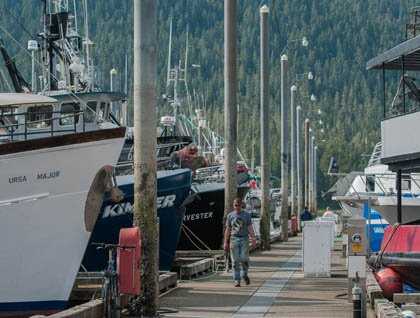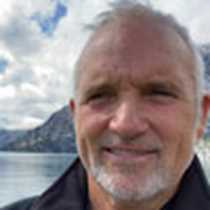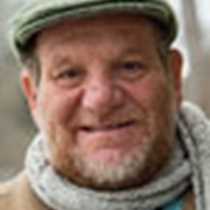Another sunny day dawns on the National Geographic Sea Bird. The heat wave continues in Southeast Alaska as our shipmates prepare for morning operations after morning stretch and breakfast. By 8:30 we’re off and hiking on Mitkof Island from our anchorage in Ideal Cove south of Petersburg, Alaska. Hikers explore the forest ecology and the peace and beauty of Hill Lake. Sitka spruce and western hemlock trees provide a canopy above the dense understory of countless flowering shrubs mosses and lichen. Moose tracks along the boardwalk trail spoke of the presence of large mammals and while none appeared, we were treated to adult Canada geese floating along the lake edge with several young goslings following close behind. Woodpeckers (red-breasted sap suckers) were also seen along the trail.
Lunchtime back on the Sea Bird provided time to refresh and prepare for the afternoon in Petersburg. This picturesque fishing town of nearly 3,000 people was founded by Norwegian, Peter Buschmann, who took advantage of the rich fishery nearby and the abundant ice provided by the Laconte Glacier. The town economy is still based on fishing, as is obvious by the fleet of trawlers, crabbers, longliners, and purse seiners docked within the harbor. We split our time between exploring the town independently and following naturalist-led walks. One of the walks was a “dock” walk among the boats and another was across the Wrangell Narrows to Kupreanof Island through a mature forest to a well-developed bog or muskeg. Muskegs are an exotic ecosystem where saturated soil and standing water lead to acidic and nutrient-poor conditions supporting an unusual array of plants. Stunted and bent shore pine seldom rise above six feet and are widely dispersed through a landscape of thick, spongy, sphagnum moss through which small but beautiful flowers protrude. Delicate bog laurel, Labrador tea, bog-rosemary, and bog orchid are seen within the mix. The nutrient-poor nature of the water-soaked soil has led to strange adaptations in which plants like the round-leaf sundew, entrap and consume small insects.
Following a feast of crab, ribs, corn on the cob, cole slaw, and apple crisp, we met biologist Andy Szabo who joined us in Petersburg to share his knowledge of whale behavior and of his research on humpback whales within Southeast Alaska. Midway through his talk, two humpbacks surfaced close to the ship interrupting his talk. This timely arrival provided a wonderful, real-world lesson on his work with the Alaska Whale Foundation. We followed a humpback whale feeding in a sea, smooth as glass, and lit by the setting sun.









